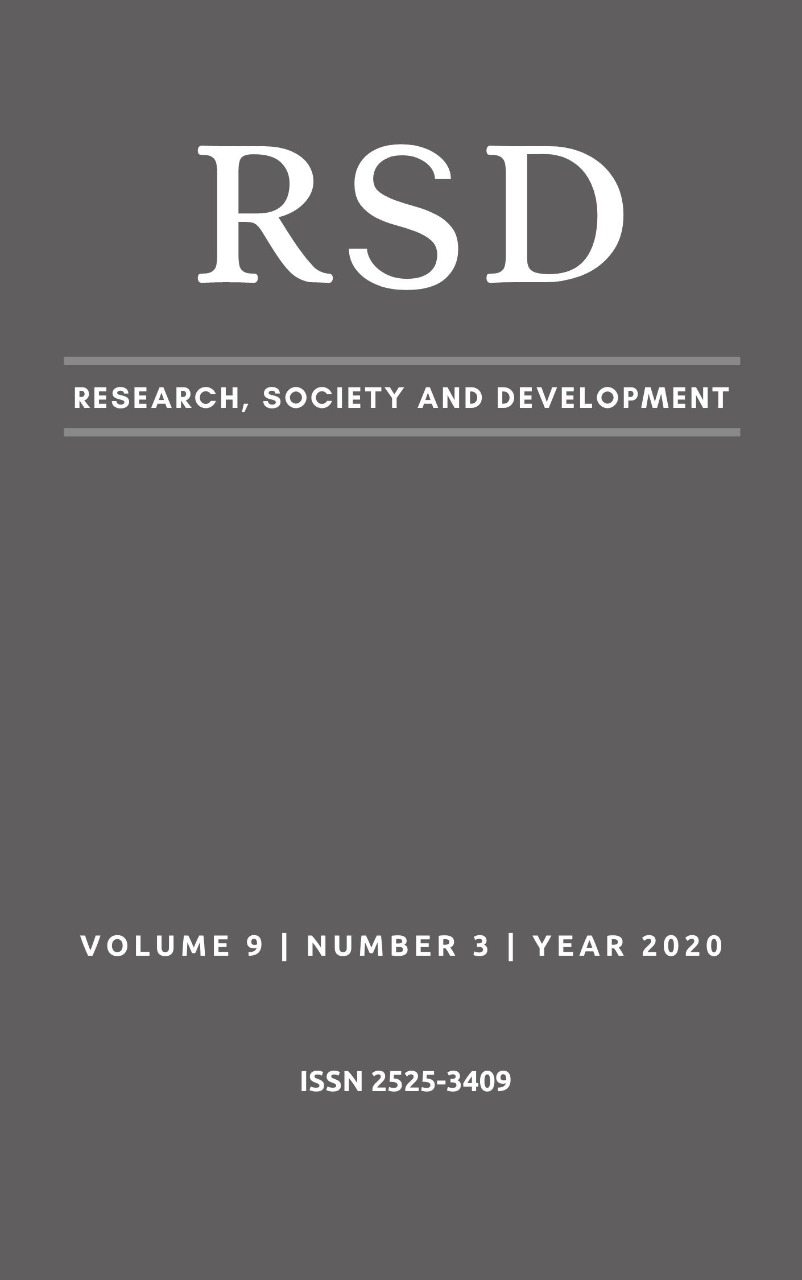Análise das lesões em atletas amadores praticantes de corridas de rua
DOI:
https://doi.org/10.33448/rsd-v9i3.2614Palavras-chave:
Lesões, Atletas, Flexibilidade.Resumo
As lesões que envolvem o mundo desportivo, são provocadas pela rigidez no treinamento e competições, essas são classificadas de acordo com o mecanismo e a região atingida. O biótipo de cada atleta varia, sendo visível via alguns coeficientes como sexo, idade, flexibilidade e força muscular. Analisar os tipos de lesões mais comuns nos atletas de rua, comparar aos seguintes coeficientes sexo, idade, flexibilidade e força muscular, também, investigar aspectos sociodemográficos dos praticantes. No evento promovido pela Associação dos Corredores de Rua de Rio Grande (ACORRG), quatorze atletas foram submetidos à realização de um questionário sobre seus hábitos de treino contendo treze questões e dois testes, um de flexibilidade, teste do banco de Wells, outro de força muscular, teste de 1RM. Os resultados apresentaram distensão muscular e tendinopatia como principais afecções, e destacou-se no sexo feminino com seis de sete voluntárias, atingindo o padrão de excelência na flexibilidade. O equilíbrio foi predominante na força muscular não apresentando diferença significante entre os sexos. A relação flexibilidade e força muscular demonstram superação feminina em ambos os valores. A influência da força muscular e flexibilidade resultaram numa influente e decisiva relação na formação de lesões, pois nas mulheres onde os valores foram considerados positivos, o número de atletas sem lesão, foi maior.
Referências
Américo SPF, Souza VV, Guimarães CQ, Rolla AFL. (2011). Utilização do Teste de 1-RM na Mensuração da Razão Entre Flexores e Extensores de Joelho em Adultos Jovens. Rev. Bras. Med. Esporte. São Paulo, 17(2): 111-114, Mar/Abr.
Andrews JR, Harrelson GL & Wilk KE. (2000). Reabilitação física das lesões desportiva. Rio de Janeiro: Guanabara Koogan.
Arruda GA, Pianca HJC, Oliveira AR. (2011). Correlação do Teste de 1RM com Aspectos Maturacionais, Neuromotores, Antropométricos e a Composição Corporal em Crianças e Adolescentes. Rev. Bras. Med. Esporte. São Paulo, 17(3): 179-183, Mai/Jun.
Bandy WD, Irion JM & Briggler M. (1998). The effect of static stretch and dynamic range of motion training on the flexibility of the hamstring muscles. J Orthop Sports Phys Ther.. Apr;27(4): 295-300.
Carvalho ACG, Paula KC, Azevedo TMC, Nóbrega ACL. (1998). Relação entre flexibilidade e força muscular em adultos jovens de ambos os sexos. Rev Bras Med Esporte, São Paulo, 4(1) – Jan/Fev.
Dias RMR, Cyrino ES, Salvador EP, Caldeira LFS, Nakamura FY, et al. (2005). Influência do processo de familiarização para avaliação da força muscular em testes de 1-RM. Rev. Bras. Med. Esporte. Niterói. v.11, n. 1, pp. 34-38, Jan/Fev.
Goldim JR. Manual de iniciação à pesquisa em saúde. (2000). 2. ed., rev. e ampl. Porto Alegre: Da Casa.
Hall JE, Guyton AC. Fundamentos De Fisiologia. (2012). 12.ed. Rio de Janeiro: Elsevier.
Pastre CM, Filho GC, Monteiro HL, Júnior JN, Padovani CR. (2004). Lesões desportivas no atletismo: comparação entre informações obtidas em prontuários e inquéritos de morbidade referida. Rev. Bras. Med. Esporte. Niterói, v. 10, n. 1, pp. 01-08, Jan/Fev.
Powers SK, Howley ET. Fisiologia do Exercício. 6.ed. São Paulo: Editora Manole, 2009.
Santana FS. Efeitos do destreinamento físico na capacidade funcional de idosos submetidos a um programa de treinamento resistido. (2009). Dissertação (Mestrado em Educação Física), 54 f., Il. Universidade de Brasília, Brasília, Brasil.
Vale RGS, Novaes JS, Dantas EHM. (2005). Efeitos do treinamento de força e de flexibilidade sobre a autonomia de mulheres senescentes. R. bras. Ci. e Mov;13(2): 33-40.
Vieira S, Hossne WS. Metodologia científica para área da saúde. (2001). 9ª reimpressão. Rio de Janeiro: Editora Elsevier.
Yamato TP, Saragiotto BT, Lopes AD. (2011). Prevalência de dor musculoesquelética em corredores de rua no momento em que precede o início da corrida. Rev. Bras. Ciênc. Esporte, Florianópolis, v. 33, n. 2, p. 475-482, abr./jun.
Downloads
Publicado
Edição
Seção
Licença
Autores que publicam nesta revista concordam com os seguintes termos:
1) Autores mantém os direitos autorais e concedem à revista o direito de primeira publicação, com o trabalho simultaneamente licenciado sob a Licença Creative Commons Attribution que permite o compartilhamento do trabalho com reconhecimento da autoria e publicação inicial nesta revista.
2) Autores têm autorização para assumir contratos adicionais separadamente, para distribuição não-exclusiva da versão do trabalho publicada nesta revista (ex.: publicar em repositório institucional ou como capítulo de livro), com reconhecimento de autoria e publicação inicial nesta revista.
3) Autores têm permissão e são estimulados a publicar e distribuir seu trabalho online (ex.: em repositórios institucionais ou na sua página pessoal) a qualquer ponto antes ou durante o processo editorial, já que isso pode gerar alterações produtivas, bem como aumentar o impacto e a citação do trabalho publicado.


